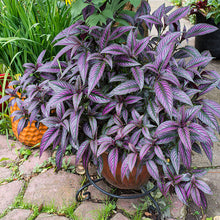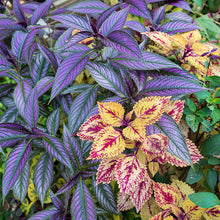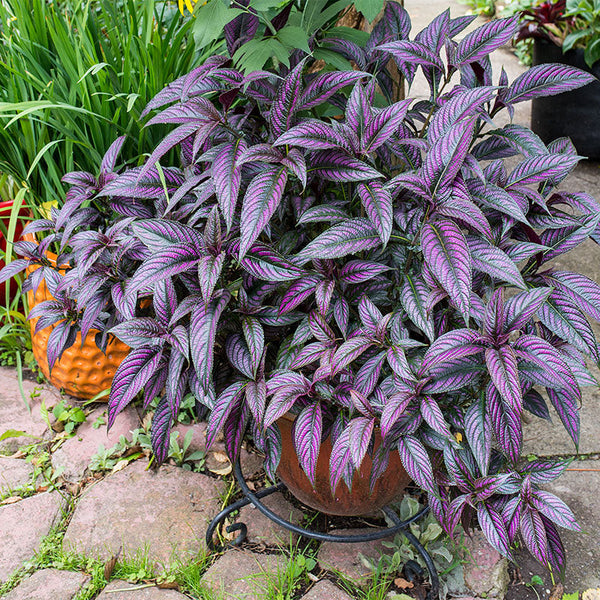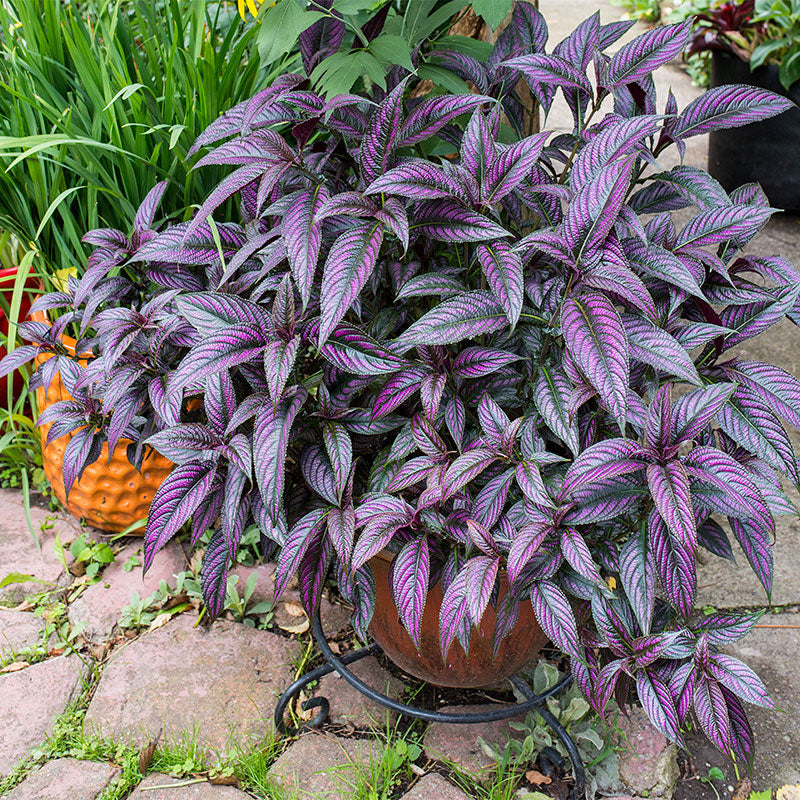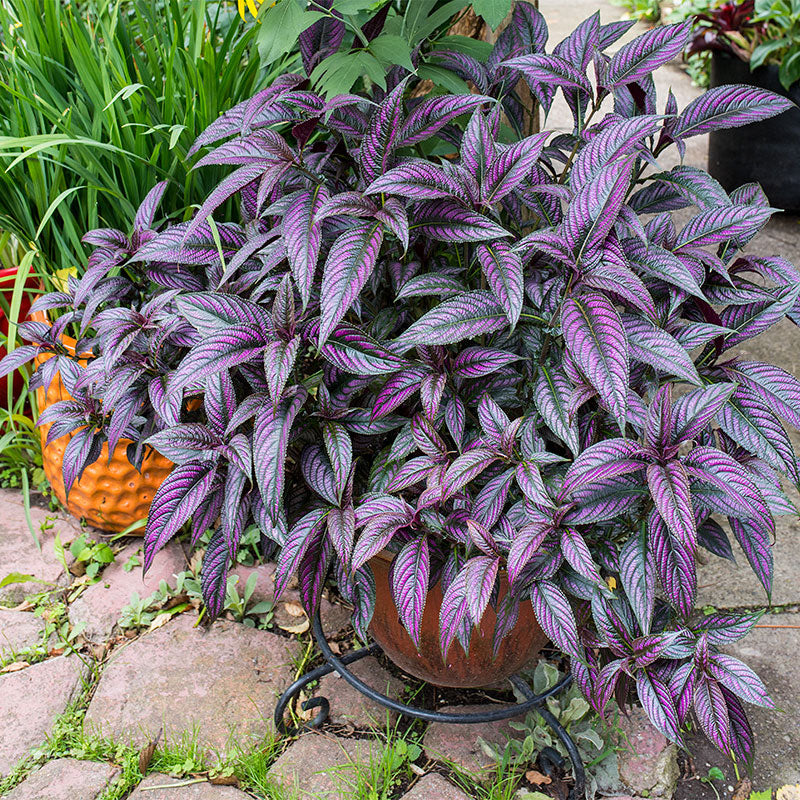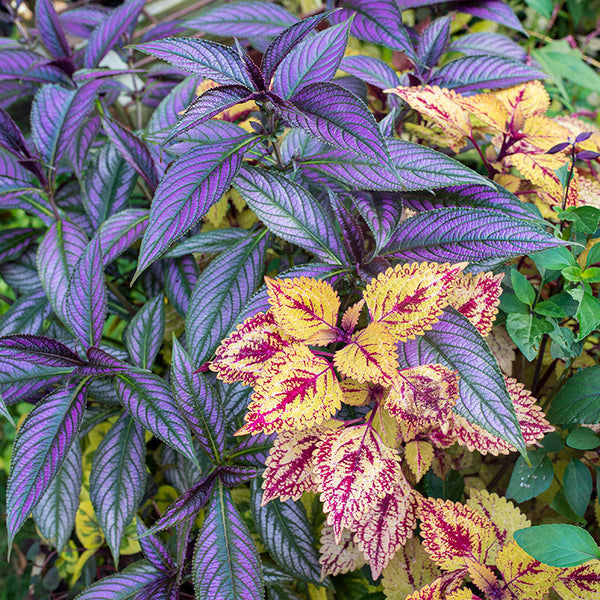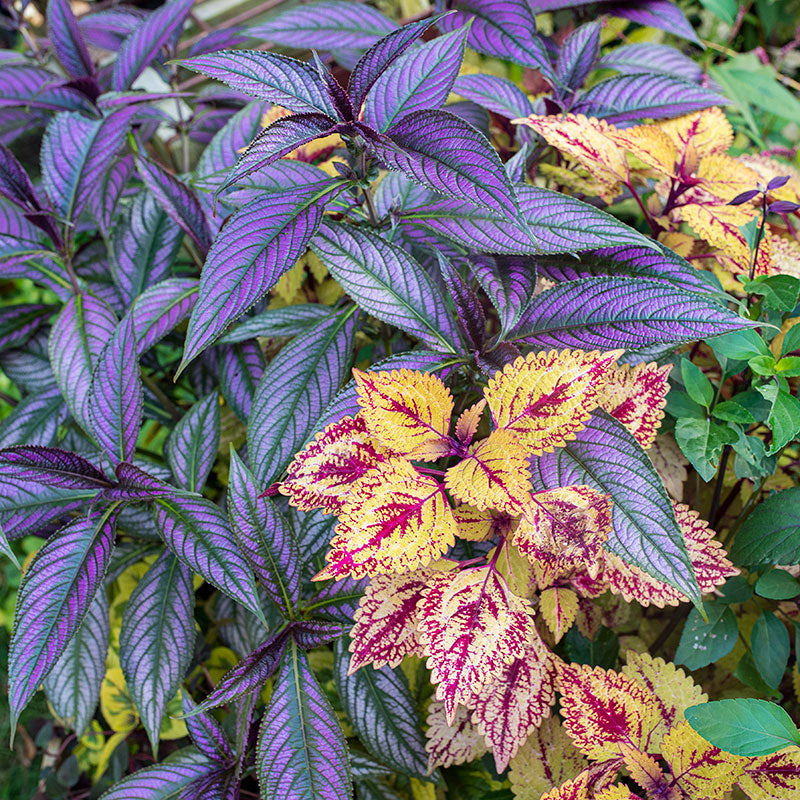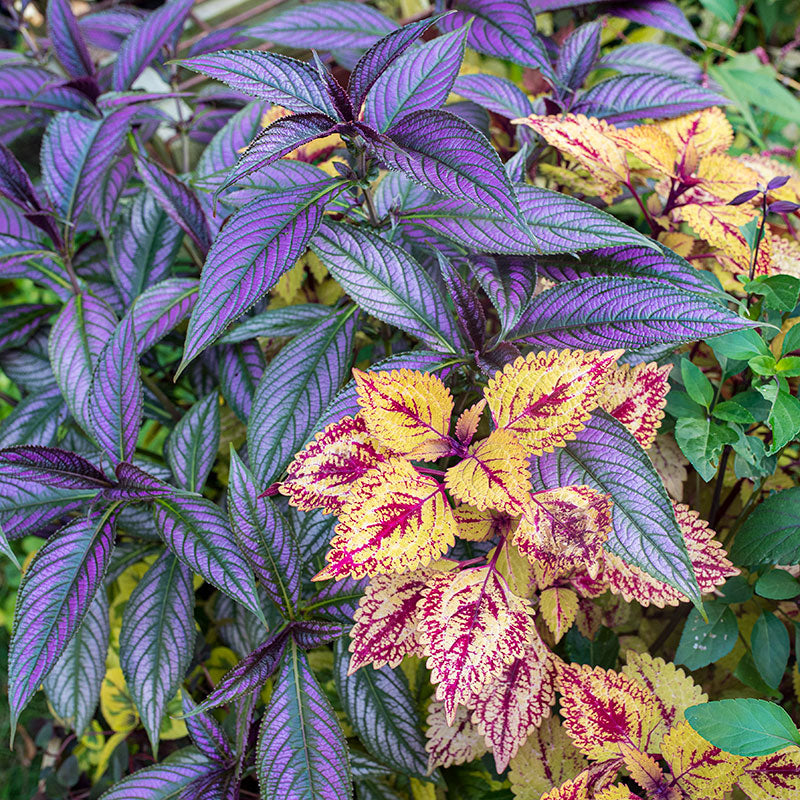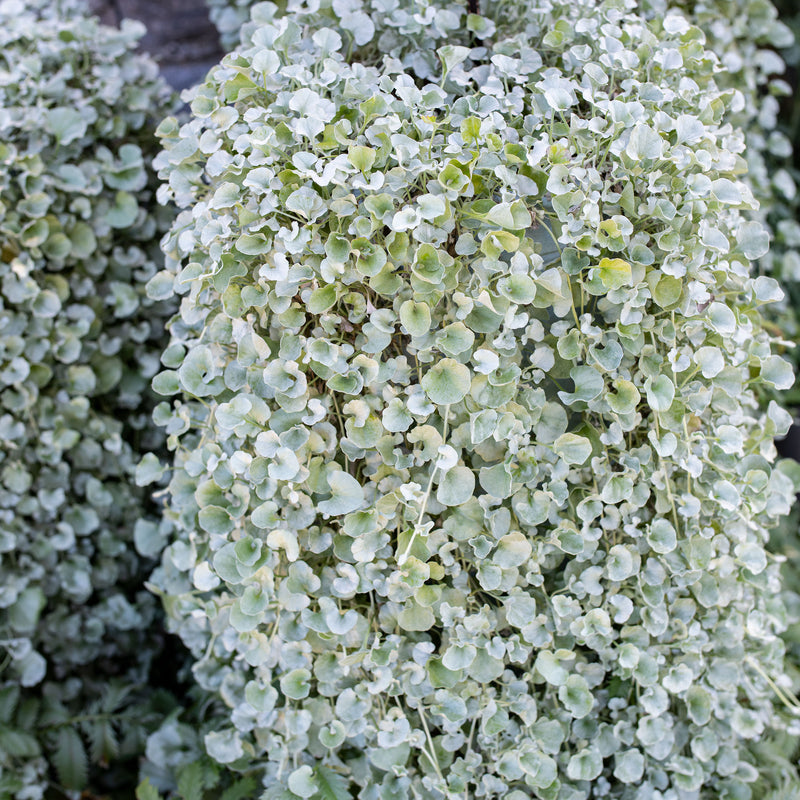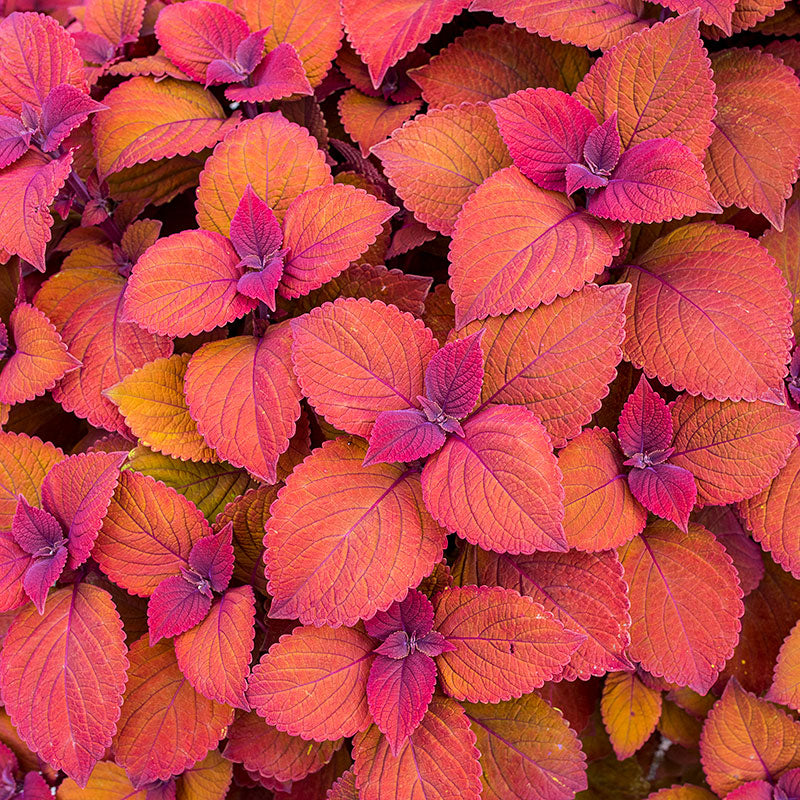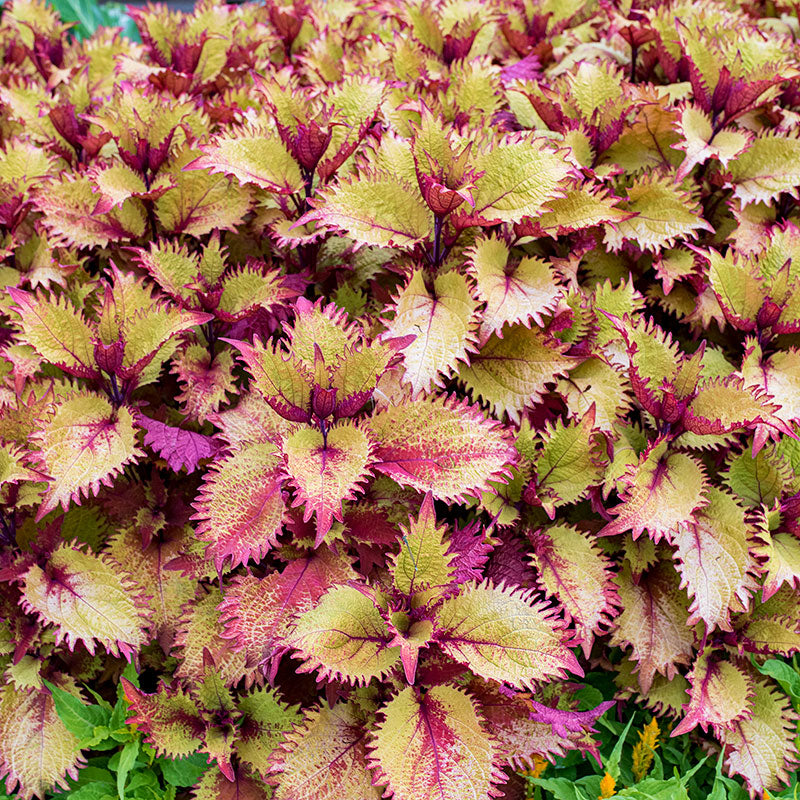Plant
Persian Shield
Strobilanthes dyerianus
A native of Burma, this classy tropical foliage plant was introduced into Kew Gardens in 1836. Persian shield thrives in hot, humid weather and grows well in the ground and large pots. The large, lance-shaped leaves are dark green overlaid completely with violet-purple and iridescent silver. They are electrifying paired with flame-hued Coleus and orange Salvias and subdued in company with baby pink Dahlias and grey foliage plants.
SKU #P2130
Currently Unavailable
Notify Me When Available
Growing Companions






























